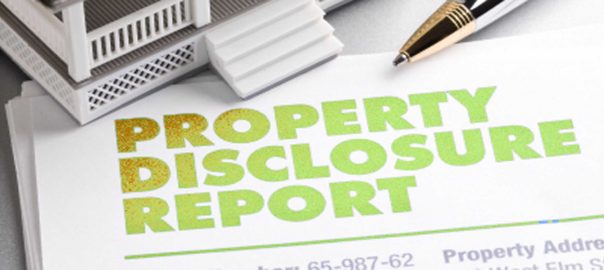Must Know About Property Disclosures
 It is standard practice for sellers to give their house a makeover with the intention of showing the property at its best.
It is standard practice for sellers to give their house a makeover with the intention of showing the property at its best.
Buyers are enticed to make an offer when everything looks great. But aside from making the house look great, some sellers may paint their houses to hide defects.
Both sellers and agents are required to document any known defects about the property. Federal law requires disclosure of defects that has known health or safety risks. Some sellers do not like doing this because it might affect the value of the property. However, in most states it’s illegal to conceal major physical defects of a property and many states require the active participation of the seller when making a written disclosure regarding the condition of the property.
Whether you are selling a house or buying one, real estate disclosures are a big factor in your transaction. Here are some things you need to know about real estate disclosures.
What is a Disclosure?
A disclosure is a written documentation of a property’s known defects from the past and present. These defects are generally things that could threaten the safety and health of the buyer. The documentation can include information about the property which may adversely and significantly affect the buyer’s use and enjoyment. The documentation is the buyer’s opportunity to learn as much about the property before they purchase it. It may include things such as leaky roof, broken appliances, lead paint or asbestos.
Real estate disclosures have two purposes: to inform buyers and to protect sellers from future legal action.
How To Make A Disclosure?
Minnesota Statutes 513.55 covers details about real estate disclosure statements. It states that the seller has to make a written disclosure to the buyer detailing material facts that the seller is aware of that could negatively affect the property. Per law the documentation has to be written. The law also prevents sellers from engaging in unscrupulous conducts or misstatements. This means that the seller cannot use sneaky wording to cover up defects in the house he or she is selling.
Depending on where you live, sellers can be on the hook for their disclosure for up to 10 years. For sellers it is better to err on the side of caution and disclose known defects so that it won’t haunt you in the form of an expensive law suit years later.
What Does A Seller Need To Include In Disclosure?
Aside from health hazards like lead paint and asbestos, disclosure documents should also include non-typical items such as improvements done without permits. Other items to include are existence of pets, termite problems, defects of major appliances including HVAC, property line dispute and neighborhood nuisances.
Difference Between Inspection and Disclosure?
A disclosure is a documentation of the known defects of a property given by the seller to the buyer. A home inspection is an independent inspection by a third party that could reveal defects that the seller is unaware of.
Aside from disclosures, buyers should also have the property inspected before buying the house. The inspector will check the interior and exterior of the property and make recommendations of the repairs that need to be made.
When Do I Need To Give The Disclosure?
Disclosure documents are provided as soon as the seller accepts the offer. This way the buyer can back out from the purchase if there are any negative aspects about the property. In some markets sellers are required to provide disclosures before an offer can be made. This is smart because it saves time for both buyer and sellers and prevents deals from falling though during escrow.
For more helpful real advice and tips click here.